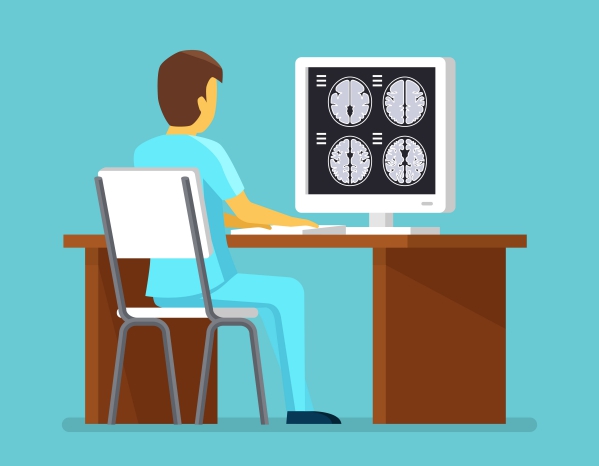What is acromegaly?
Acromegaly is a hormonal disorder which occurs when your pituitary gland- a small pea-sized gland which is located at the base of the skull, responsible for the production of hormones which will tell other glands to release hormones- produces too much growth hormones during adulthood. This excessive production of growth hormones results in an increase in size of your bones. When the pituitary gland releases growth hormones into your bloodstream, it stimulates your liver to produce the hormone insulin-like growth factor-1 (IGF-1) which causes your bones and other tissues to grow. When it occurs during childhood, this leads to an overall increase in size, including height, and is called gigantism. However, when it occurs during adulthood, there is no increase in height but an increase in size limited to the hands, feet and face, this condition is then known as acromegaly.
What are the causes of acromegaly?
The most common causes of excessive production of growth hormones in adults include:
- Pituitary tumours: A great majority of acromegaly cases occurs due to benign (noncancerous) tumour (adenoma) of the pituitary gland. This tumour leads to an excessive production of growth hormones, resulting in the signs and symptoms of acromegaly. As the tumour gets bigger, it may compress on nearby brain tissues resulting in impaired vision or headaches.
- Nonpituitary tumours: In rare cases, tumours located in other parts of the body such as in the pancreas or lungs, may produce growth hormones. In other cases, the tumours may produce the hormone growth hormone-releasing hormone (GH-RH) which stimulates the pituitary gland to produce more growth hormones.

What are the signs and symptoms of acromegaly?
Acromegaly is a disorder that progresses very slowly over time, which is why the signs and symptoms may not be apparent for years. The signs and symptoms of acromegaly include:
- Enlarged hands or feet.
- Thickened skin.
- Enlarged facial bones, lips, tongue and nose.
- Oily skin.
- Skin tags which are little outgrowths of skin tissue.
- Excessive sweating.
- Joint pain.
- Reduced joint mobility.
- Muscle weakness.
- Fatigue.
- A deepened voice due to enlargement of the vocal cords.
- Severe and loud snoring due to obstruction of the upper airway.
- Vision impairments.
- Persistent or severe headaches.
- Reduced libido (loss of interest in sex).
- Menstrual cycle irregularities in females.
- Erectile dysfunction in males.
There are other conditions which may resemble acromegaly and these include:
- Fragile X syndrome.
- Beckwith-Wiedemann Syndrome.
- Congenital Adrenal Hyperplasia.
- Marfan syndrome.
- Hyperinsulinism.
 Pachydermoperiostosis.
Pachydermoperiostosis.- McCune-Albright Syndrome.
- Precocious pseudopuberty.
- Precocious puberty.
Making a diagnosis
To make a diagnosis, your doctor will first take a detailed history from you to know more about your symptoms. After the history taking, your doctor will perform a thorough physical examination to look signs of acromegaly. To confirm the diagnosis, your doctor will order some tests and these include:
- Oral glucose tolerance test: In the test, your doctor will ask you to drink a liquid containing glucose after which he/she will measure the level of glucose in your blood. In normal people, the level of glucose will return to normal after 2 hours. However, in people with acromegaly, the level of glucose will stay elevated even after 2 hours of waiting due to insulin resistance. This insulin resistance is caused by the elevated growth hormone level which prevent insulin to work properly.
- Growth hormone suppression test: During this test, you will be asked to drink a liquid containing sugar after which your doctor will measure the level of growth hormones in your blood. In normal people, the sugary drink will cause your growth hormone level to fall. However, in people with acromegaly, the level of growth hormone will stay high.
- IGF-1 measurement: This test involves your doctor taking a blood sample to measure the level of IGF-1 after you have fasted overnight. If you have acromegaly, the level of IGF-1 will be elevated.
- Magnetic Resonance Imaging (MRI) scan of the brain: This imaging test is used to locate and determine the size of the pituitary tumour. This test is the best imaging technique to detect pituitary tumours and does not involve the use of ionising radiation.
- Computed Tomography (CT) scan of the abdomen/pelvis: This imaging test is used when the MRI scan of the brain does not detect any abnormalities with the pituitary gland. It is used to detect tumours of the pancreas, adrenal glands and ovaries which may be secreting the excess growth hormones.


What are the treatments of acromegaly?
The treatment of acromegaly depends on various factors such as your age, overall health, severity of your symptoms, location and size of the tumour. The treatment of acromegaly include medications, surgery and radiation therapy.
Medications
The medications that are used in the management of acromegaly include:
- Somatostatin analogues: Somatostatin is a brain hormone which inhibits growth hormone production. These medications mimics the effects of the brain hormone and examples include octreotide and lanreotide.
- Dopamine agonists: These drugs help to lower the levels of growth hormones and also help to reduce the size of the tumour. An example include bromocriptine. Unfortunately, it is accompanied by some side effects such as tiredness, dizziness, mood changes and sleep problems.
- Growth hormone antagonists: These medications block the actions of growth hormones in your body and an example is pegvisomant.

Surgery
Your doctor may advise you to undergo surgery if the tumour is continuing to grow and causes more symptoms. In the surgery, your surgeon will remove most of the pituitary tumour and the surgery is call transsphenoidal surgery. If the tumour is not on the pituitary gland, another type of surgery will be performed. The surgery often returns your level of growth hormones back to normal, restores your vision and relieve the headaches if the tumour was compressing surrounding tissues in your brain.
Radiation
Radiation therapy is performed if your surgeon was unable to remove all of the tumour during surgery. Radiation therapy destroys any remaining tumour cells and slowly reduces growth hormone levels.
What are the complications of Acromegaly?
The complications associated with acromegaly include:
- Hypertension.
- Osteoarthritis.
- High cholesterol.
- Enlargement of the heart (cardiomyopathy).
- Type 2 diabetes.
- Polyps in the lining of your large intestine.
- Carpal tunnel syndrome.
- Obstructive sleep apnoea.
- Increased predisposition to cancerous tumours.
- Vision impairment or loss.
- Spinal cord compression.
- Increased kidney size.
- Thick skin.
- Increased risk of cerebrovascular accidents.

Expectations (prognosis)
Unfortunately, the morbidity and mortality rates of acromegaly are high as it is a severe disease that is often diagnosed late. However, an early diagnosis is associated with a better prognosis as your surgeon may remove the tumour earlier and the condition may be potentially cured.
Source:
J. Alastair, I. and Simon, M., 2016. Davidson's Essentials of Medicine. 2nd ed. London: ELSEVIER.
Parveen, K. and Michael, C., 2017. Kumar & Clarks Clinical Medicine. 9th ed. The Netherlands: ELSEVIER.
Schwartz, R., 2020. Gigantism and acromegaly.
Sata A, Ho KK. Growth hormone measurements in the diagnosis and monitoring of acromegaly. Pituitary. 2007. 10(2):165-72.
Katznelson L, Laws ER Jr, Melmed S, et al. Acromegaly: an Endocrine Society clinical practice guideline. J Clin Endocrinol Metab. 2014 Nov. 99(11):3933-51.



